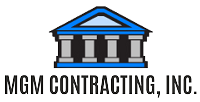Are you considering installing solar panels on our roof? Before contacting our Cocoa, FL roofers, you must ensure your roof is ready for this investment.
In this article, we will examine crucial factors, encompassing your roof’s age, structural integrity, orientation, and overall condition.
A comprehensive assessment of these aspects will empower you to determine the feasibility of installing solar panels on your roof. Let’s explore and determine if your roof is well-suited for the task!
Age of Your Roof
First, we assess the roof’s age to determine its suitability for solar panel installation.
The lifespan of a roof plays a crucial role in the decision-making process. Older roofs may have experienced wear and tear, making them less structurally sound and more susceptible to leaks.
Оn top of considering the roof’s age, we also have to consider its maintenance history.
Consistent roof upkeep, which involves routine inspections and necessary repairs, can effectively extend its longevity and guarantee its capacity to accommodate solar panels.
Suppose the roof is nearing the end of its expected lifespan or has a history of significant damage. In that case, it may be necessary to replace or repair it before installing solar panels.
Considering these factors will aid in ascertaining the viability and sustained effectiveness of implementing solar panels on your roof.
Structural Integrity
It is imperative to comprehensively assess the roof’s strength and stability to gauge its structural suitability for solar panel installation.
This evaluation is essential to confirm the roof’s ability to bear the solar panels’ load and mitigate any risk of damage or collapse.
Here are some key factors to consider:
- Roof load capacity: You must determine if the roof has the capacity to bear the additional weight of the solar panels. This involves calculating the load capacity of the roof structure and comparing it to the weight of the panels.
- Potential for roof leaks: Installing solar panels often involves drilling holes into the roof, creating potential entry points for water. It is essential to assess the roof’s condition and address any existing or potential leaks before proceeding with the installation.
Roof Orientation
The orientation of the roof plays a crucial role in determining the effectiveness and efficiency of solar panel installation.
The direction in which the roof faces can significantly impact the amount of sunlight that the solar panels receive throughout the day. Ideally, a roof with a southern orientation is the most desirable as it allows for maximum exposure to the sun. This ensures optimal energy efficiency and cost-effectiveness of your solar panels.
Roofs that face east or west can still be suitable for solar panel installation, but the energy generation may be slightly reduced.
On the other hand, roofs with a northern orientation are generally not recommended for solar panel installation due to their limited sun exposure.
Considering the roof’s orientation when planning for solar panel installation is important to maximize the benefits and savings.
Overall Roof Condition
Before proceeding with solar panel installation, it is important to assess the roof’s overall condition. This will ensure that your roof is in good shape and can support the weight of the solar panels.
Here are some key factors to consider when evaluating the condition of your roof:
- Roof maintenance: Regular roof maintenance is crucial to ensure its longevity and durability. Inspect your roof for any indications of damage, like cracked or absent shingles, and attend to them without delay.
- Weather resistance: Our roof should be able to withstand various weather conditions, including heavy rain, strong winds, and extreme temperatures. Inspect for any signs of leakage or ice and water damage that could compromise the integrity of the roof.
Structural integrity: A stable and structurally sound roof is essential for the installation of solar panels. Ensure that there are no sagging areas or signs of structural damage.



Comments are closed